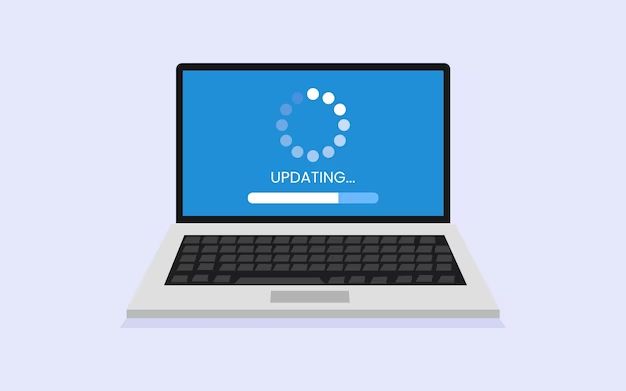Completely wiping a PC to its factory settings is sometimes necessary when you want to do a clean reinstall of the operating system, sell or donate the computer, or if you just want to reset it to its original state. A full wipe will delete all your personal files, installed programs, and OS settings. Here are some quick answers about fully resetting a PC:
Why Would I Want to Completely Wipe My PC?
There are a few common reasons to completely wipe a computer:
- You’re giving away, selling or donating the PC – Wiping it protects your personal data.
- You’re experiencing performance issues or bugs – Resetting can fix software problems.
- You want to do a clean OS install – Wiping everything gives you a blank slate.
- You have a virus or malware – A full reset helps eliminate malicious software.
- You’re getting rid of a old computer – Wiping it cleans things up before disposal.
What Methods Can I Use to Wipe a PC?
There are a few options for fully resetting a Windows PC:
Using Windows Settings
You can reset your PC from the Windows Settings app. This will reinstall Windows and delete all your personal files and apps. Just go to Settings > Update & Security > Recovery and choose “Get started” under “Reset this PC”.
Using Installation Media
Booting from a Windows installation USB or DVD will allow you to completely wipe the PC when installing a fresh copy of the OS. Just choose “Custom” for the type of installation and delete all partitions.
Using Diskpart from the Command Prompt
Diskpart is a command line tool that can clean and reformat a drive. Boot to the recovery tools or the installation media to access the Command Prompt and use Diskpart commands like “clean” and “create partition” to wipe the drive.
Using Third-Party Software
Programs like DBAN or Eraser can completely wipe drives in ways that make data recovery very difficult. These tools can help securely erase data when giving away or recycling a PC.
How Do I Back Up My Files Before Wiping the PC?
Before resetting your computer, it’s important to back up any personal files and data you want to keep. Here are some tips for backing up prior to a reset:
- Copy files to an external hard drive, USB stick or cloud storage
- Use cloud syncing services like OneDrive or Google Drive to save files online
- Create a full system image backup to an external drive
- Manually copy important folders like Documents, Pictures, Music, etc. to another location
- Ensure any local app data you need is synced to the cloud or backed up
How Do I Do a Full Wipe and Reinstall Windows?
Here are the basic steps to completely wipe a PC and reinstall a clean copy of Windows:
- Backup any important personal files and data
- Boot from the Windows installation media
- Go through the setup prompts until you reach the drive selection screen
- Delete all existing partitions until only unallocated space remains
- Select the now “Unallocated Space” and click Next to install Windows
- Work through the rest of the clean install process
- Install drivers and applications as needed
- Restore your files and settings from backup
How Can I Securely Wipe Disks Before Disposal?
To protect your personal data before disposing of or recycling a PC, you’ll want to use a program designed for secure disk wiping. Here are some tips:
- Use a tool like DBAN to securely erase data by overwriting the drive multiple times
- Enable the SSD secure erase function via diskpart to reset an SSD to factory condition
- Use disk encryption before wiping to add an extra layer of protection
- Physically destroy hard drives if you really want to ensure no data recovery is possible
- Reformatting or reinstalling the OS doesn’t fully erase data – use secure wipe methods
| Secure Erasing Software | Description |
|---|---|
| DBAN | Bootable tool that securely overwrites data multiple times |
| Eraser | Securely overwrites files and folders on Windows |
| Parted Magic | Linux-based live OS with secure erase tools |
| KillDisk | Boots from CD/USB to wipe disks with various standards |
| VerifiedSanitize | Sends a firmware command to securely erase SSDs |
What Precautions Should I Take Before Wiping My PC?
Take the following precautions before completely wiping a Windows PC:
- Backup all personal data, files, photos and anything else important
- Make sure you have Windows installation media and the product key
- Download the latest Windows updates and drivers beforehand
- Disconnect any external storage drives to prevent accidental wiping
- Write down any specialized system settings needed for reinstallation
- Log out of subscription services, online accounts and email
- Deauthorize any linked devices or services
- Activate password reset questions in case you forget login credentials later
- Terminate any private remote access or screen sharing connections
Conclusion
Completely wiping and resetting your PC to factory default condition isn’t difficult, but does require some planning and preparation. Make sure to fully back up your files, have Windows installation media ready, and use the proper disk wiping tools to securely erase data. With some caution taken beforehand, you can safely reinstall Windows or dispose of a PC after a full wipe. Just be absolutely certain to save any personal files and data beforehand that you want to keep.
